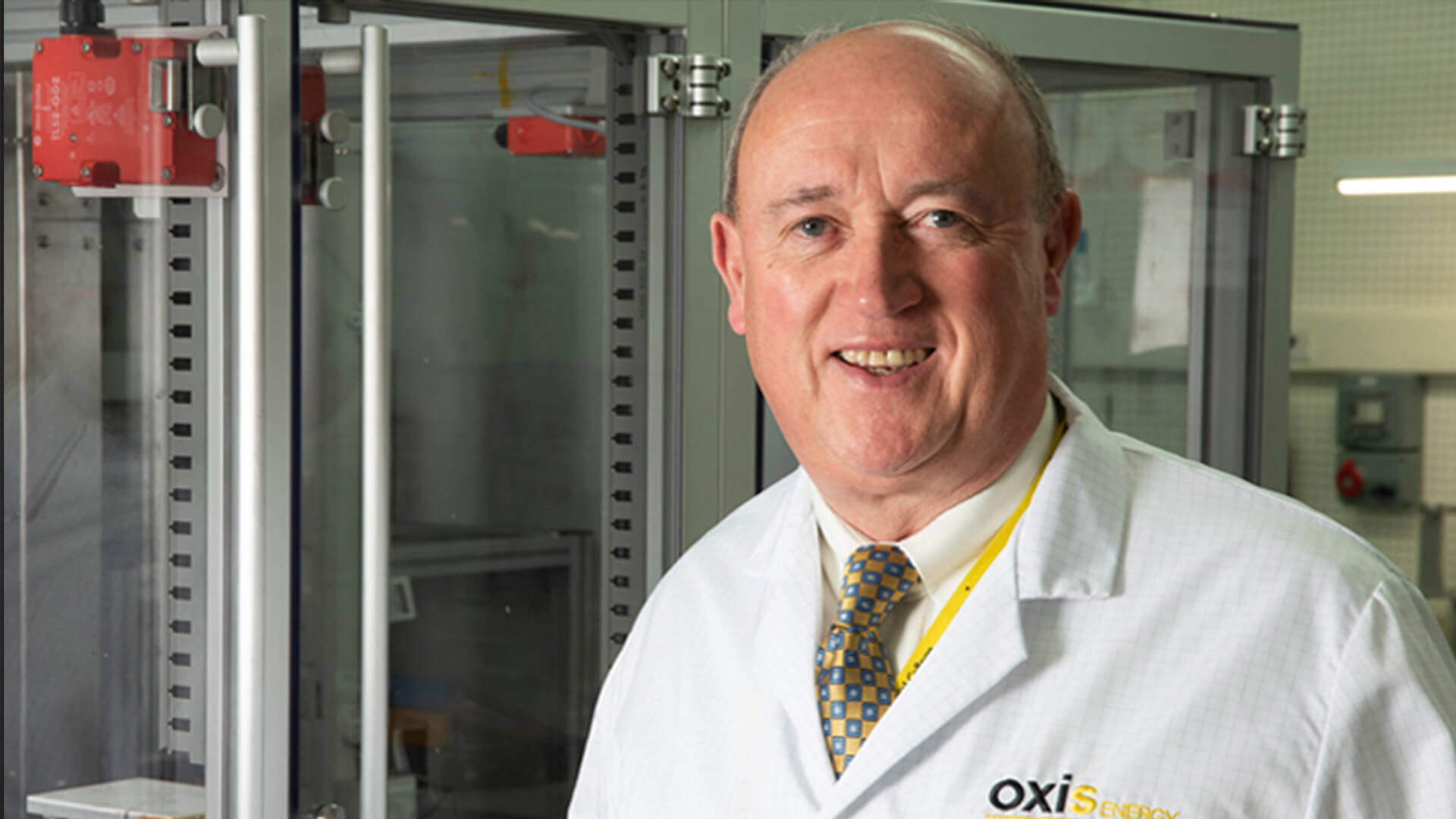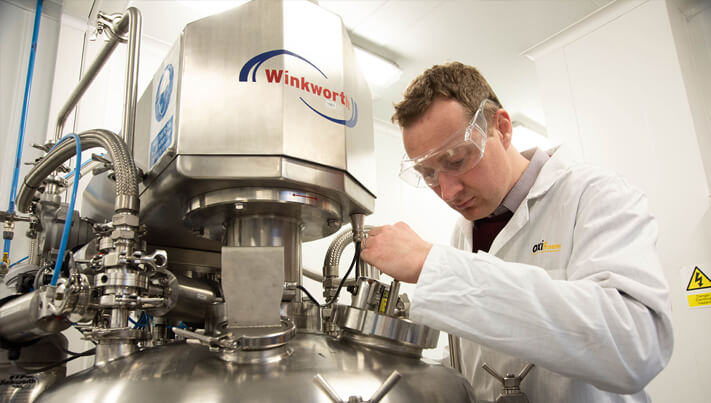The World Leaders of the Next Technological Age

OXIS Energy is developing safe, high-energy Lithium-Sulfur technology for use in rechargeable batteries for a variety of sectors, though utilised primarily in aviation, defence and security and heavy electric vehicles (HEV) applications. In late March, the company was recognised by CEO Monthly in the ‘2019 Ones to Watch’ programme, which is dedicated to showcasing the leading lights across a plethora of emerging or thriving industries. We took a closer look at the company and spoke to its CEO, Huw Hampson-Jones, to find out more.
Lithium-Ion batteries are old news. The future of batteries lies, by all considerations, in the combination of lithiumsulfur. In this emerging market, only a handful of companies have distinguished themselves as pioneers and front-runners, helping to drive this sector to early success. There can be no denying that OXIS Energy is one of these innovators, helping to define the next step of technological development.
Notably, OXIS Energy is based at the Culham Science Centre in Oxfordshire, where the original Lithium-Ion batteries were developed and prototyped. It seems fitting then that this is where that technologies’successor is created, continuing the story of the site. With over 43patent families, with 185 patents granted and 99 pending, the company is moving quickly to secure its lithium-sulfur product as the undeniable ‘next step’ in a notoriously competitive industry.
“Our strategy is to work with world class partners to develop the chemistry into a product that can be used in a range of applications and build cells on our pilot production line to prove its performance. OXIS will then licence this Li-S technology to its manufacturing partners for mass production to allow us to continue to develop the chemistry further and revolutionise the energy market.” – Huw Hampson Jones, CEO.
Today, OXIS Energy is swiftly solidifying plans to increase production of its patented technology. Following on the heels of the announcement of a new manufacturing plant in Brazil early last year, the company has just revealed plans to build a ‘sister plant’ in Kenfig Industrial Estate Port Talbot in Wales. Yet, this is only the early stages of OXIS’ short-term plans to establish sustainable growth in an industry that is only just coming to realise the impact of this new technology.
Here, Huw offers some vital insight into OXIS’ immediate and long-term goals: “The short-term aim is to bring both factories online by the second half of June 2022 – that is the target date for commissioning the plant in Brazil, with the Wales plant expected by early 2022. Now, essentially, the ‘secret sauce’ for the company is the electrolyte and the cathode: the chemistry behind the energy production in the cells. OXIS owns the intellectual property rights associated with the electrolytes and cathodes, and that is – above all else – the critical element of the company. The Port Talbot plant will produce this ‘secret sauce’ and will then ship it to Brazil to create the cells. The manufacturing plant in Brazil has come about as a direct collaboration between OXIS and the state government of Minas Gerais.
“There are many reasons for basing the plant in Brazil, but one of the main reasons is that Brazil has significant deposits of lithium. One of our long-term goals is to collaborate with the state government to exploit these deposits in a manner that produces what we call ‘very high-grade lithium metal’. Once we’ve established the production of this material neither OXIS or Minas Gerais will have to rely on importing lithium from America or China.

“Furthermore, Brazil has significant deposits of high-quality graphene, and we’re hoping that this collaboration will help us to utilise graphene in the makeup of the ‘secret sauce’. But, that’s all planned for at least five years from now. Ultimately, Brazil wanted to attract high skilled jobs. It wants to establish an independence from the United States and China in the lithium battery market, and last but not least, Brazil has a very good trading relationship with Europe. That’s not to mention the strategic element of a manufacturing plant in Brazil when it comes to the markets we want to infiltrate.”
These markets form the foundations of OXIS’ foreseeable future, as it looks to capitalise on industries that will most immediately benefit from the unique advantages of its product.
“Again, in the short-term, we are targeting aviation, defence and security, and heavy electric vehicles like trucks and buses. The reason we are focusing on those areas is because they reflect one of the greatest assets of the OXIS technology – the ability to harness four to five times the energy density of current technology. Lithium-ion is almost thirty years old, and was designed for mobile phones, laptops and the consumer market. It wasn’t designed to harness power and energy sufficient to power cars, trucks, trains, aviation. OXIS Energy, through our high gravimetric energy density pouch cell can harness in excess of 400Wh/ kg. That’s double current technology.”
“The work we are doing today means that within five years we will have tripled or quadrupled that capability. Once we meet
and exceed 400 Wh/kg, the aviation industry becomes very interested. Even here, we have short and long-term plans. In the short-term, we are targeting regional aircraft – those with flight times of maybe two to four hours. For example, we are collaborating with American aircraft manufacturers to produce a common Li-S advanced battery cell for the high voltage battery pack system to be considered for their future electric aircraft.”
This doesn’t even touch on a core advantage of OXIS lithium-sulfur technology, which is that it is fundamentally more environmentally friendly than alternatives on the market and, of course, traditional fossil fuelbased systems.
“Heavy electric vehicles, such as buses and trucks, are one of the greatest pollutants in metropolitan cities. Current electric buses utilise a system that can weigh four tonnes, yet, by collaborating with OXIS, we can halve this weight down to two tonnes and quadruple the distance achieved on one charge. This brings me onto another advantage of having a plant in Brazil, and that is that Brazil is the world’s 3rd largest market for buses and, more importantly, these vehicles are on average over fifteen years old. You can imagine the pollution that is being emitted from these buses in major cities such as São Paulo. Plus, Brazil doesn’t have rail infrastructure, so all major transport around the country is by trucks. Now, we have a plant in Brazil that can immediately address this need without any devastating impact or theft of IP.”
“We don’t use any rare earth material in the production of our cells. We have no toxic materials such as nickel or manganese. We have no carcinogenic material such as cobalt, and everything is benign to the environment.” -Huw on OXIS’s environmentally friendly production of its Li-S technology.
The success that OXIS has achieved so far can be credited to its diligent and expert approach as it works to achieve international standards, particularly in regard to safety regulations. Unlike LithiumIon, OXIS’ Lithium-Sulfur cells can withstand extreme abuse, including nail and bullet penetrations, with no observable adverse reaction. This fact alone makes the new battery preferable over the old – after all, Lithiumion batteries can be both highly reactive and combustible. Huw touches on another benefit: “By utilising sulfur – a recycled material as a by-product of the oil industry- instead of heavy metals such as cobalt, the environmental cost is highly reduced, making it an eco-friendly alternative to Lithium-ion cells.”
“If I can prove to the world that OXIS can power an aircraft or a heavy electric vehicle such as a bus or a truck, then entering the car market will be much, much easier – I’m at the cusp of my breakthrough.”
All in all, OXIS Energy’s core product is, in almost every way, more efficient, more powerful, and safer than the current technology. Through the cells’ applications, both current and potential, it is clear that lithium-sulfur systems are a stepping stone to swift, comprehensive growth across a plethora of concurrent industries. In this, OXIS Energy is soon to become an essential element on the business landscape, as it looks to become the undisputed world-leader of the next technological age.






